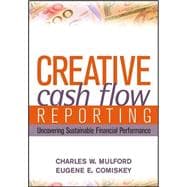
What is included with this book?
Eugene E. Comiskey, PhD, CPA, CMA, is Associate Dean for Faculty and Research, Callaway Chair, and Professor of Accounting in the College of Management at the Georgia Institute of Technology in Atlanta. For more than twenty years, he has consulted with commercial banks around the world. He is the coauthor of three books, including The Financial Numbers Game, and has published numerous papers in a wide range of professional and academic journals.
| Foreword | xi | ||||
| Preface | xiii | ||||
| About the Authors | xv | ||||
|
1 | (36) | |||
|
3 | (2) | |||
|
5 | (4) | |||
|
9 | (9) | |||
|
18 | (11) | |||
|
29 | (1) | |||
|
30 | (2) | |||
|
32 | (1) | |||
|
33 | (4) | |||
|
37 | (44) | |||
|
38 | (11) | |||
|
49 | (19) | |||
|
68 | (5) | |||
|
73 | (1) | |||
|
74 | (7) | |||
|
81 | (40) | |||
|
86 | (5) | |||
|
91 | (23) | |||
|
114 | (2) | |||
|
116 | (5) | |||
|
121 | (38) | |||
|
125 | (6) | |||
|
131 | (23) | |||
|
154 | (1) | |||
|
155 | (4) | |||
|
159 | (50) | |||
|
160 | (6) | |||
|
166 | (14) | |||
|
180 | (23) | |||
|
203 | (6) | |||
|
209 | (32) | |||
|
211 | (1) | |||
|
211 | (2) | |||
|
213 | (5) | |||
|
218 | (13) | |||
|
231 | (4) | |||
|
235 | (6) | |||
|
241 | (28) | |||
|
242 | (2) | |||
|
244 | (8) | |||
|
252 | (5) | |||
|
257 | (5) | |||
|
262 | (3) | |||
|
265 | (4) | |||
|
269 | (36) | |||
|
271 | (13) | |||
|
284 | (6) | |||
|
290 | (10) | |||
|
300 | (5) | |||
|
305 | (40) | |||
|
308 | (6) | |||
|
314 | (11) | |||
|
325 | (11) | |||
|
336 | (5) | |||
|
341 | (4) | |||
|
345 | (34) | |||
|
348 | (10) | |||
|
358 | (4) | |||
|
362 | (8) | |||
|
370 | (5) | |||
|
375 | (1) | |||
|
375 | (4) | |||
| Glossary | 379 | (16) | |||
| Subject Index | 395 | (14) | |||
| Company Index | 409 |
The New copy of this book will include any supplemental materials advertised. Please check the title of the book to determine if it should include any access cards, study guides, lab manuals, CDs, etc.
The Used, Rental and eBook copies of this book are not guaranteed to include any supplemental materials. Typically, only the book itself is included. This is true even if the title states it includes any access cards, study guides, lab manuals, CDs, etc.